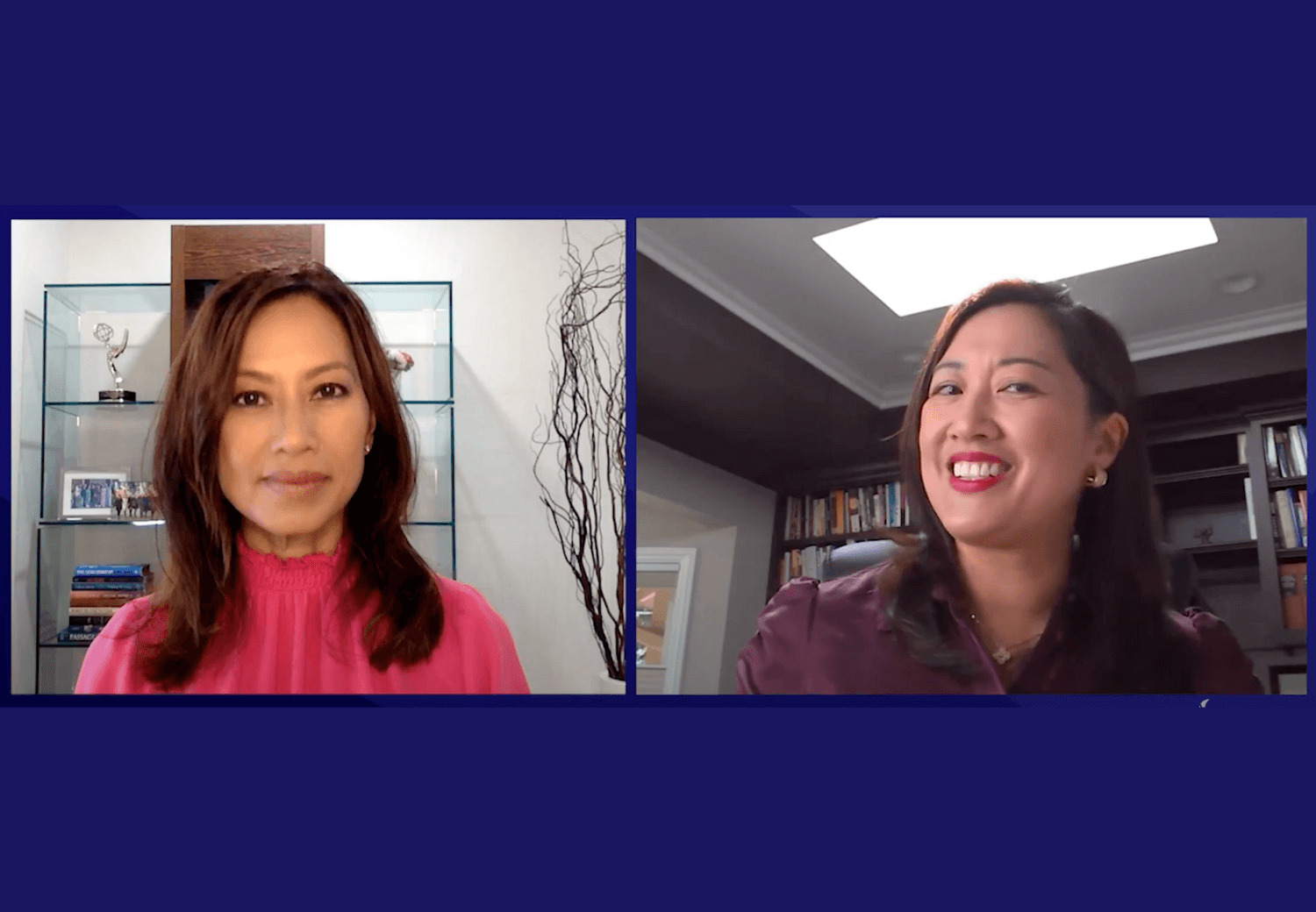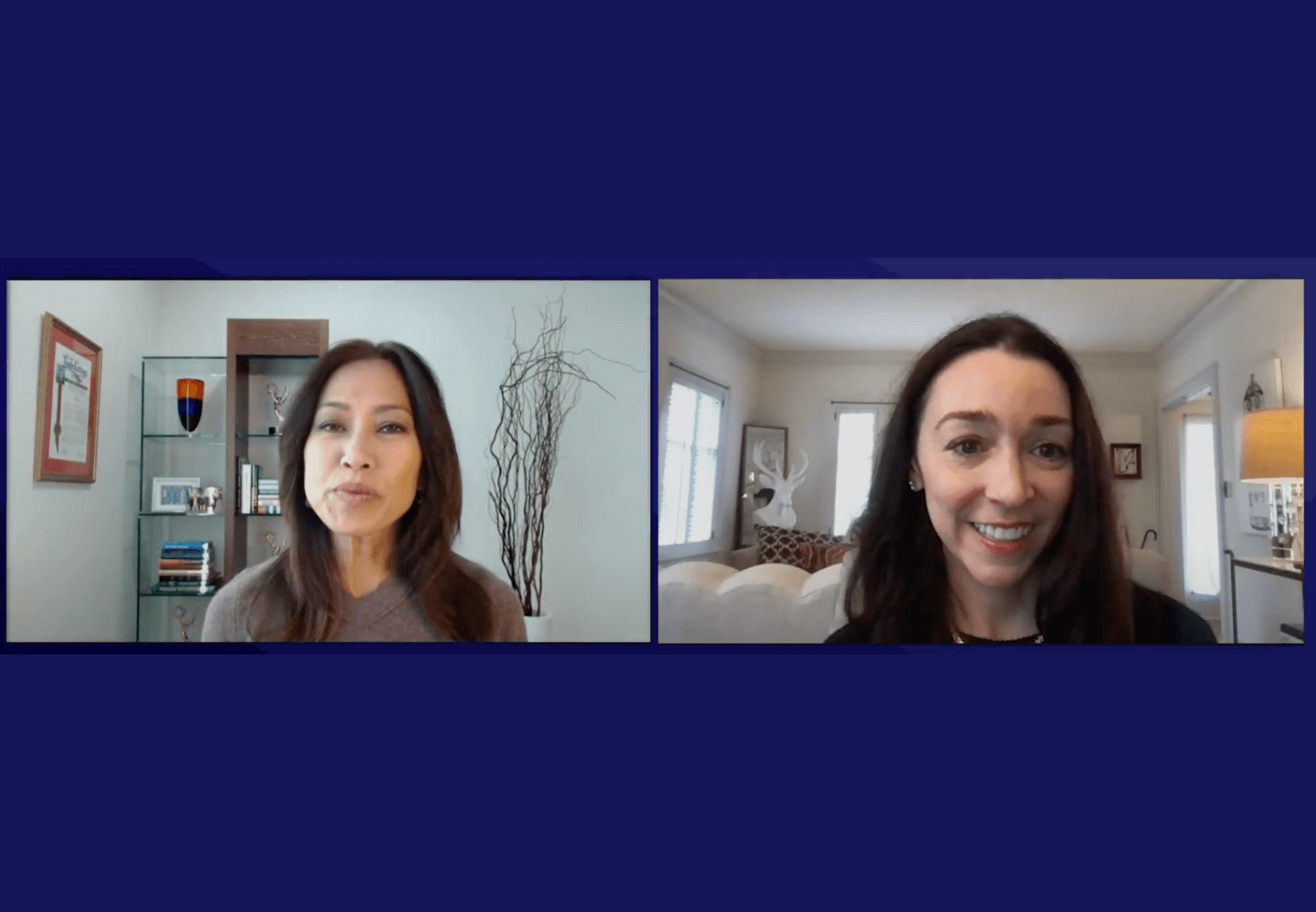Summary:
Encouraging creativity in the workplace is paramount to running a successful business. Dive in to learn Cindy’s strategies for getting her team to think outside the box.
Thuy
What strategies do you have for promoting creativity on your team? And what about for the company as a whole?

Cindy Goodrich
Yeah, so for the company as a whole, we actually have a number of high impact behaviors that we work towards, and one of those is practice imagination.
So it’s really, you know, we’re encouraging this across the company. How are we encouraging people to just sort of stretch and think about what could be versus here are the realms that you’re in. And we talk a lot about, particularly in a startup when you have a vision or you have a big mission and then you have this reality.
And I think this was in Peter Senge’s work where it’s like that creates that creative tension between it. And you have to, it forces a little bit of creativity. So, I think the nature of the business we’re in, it just drives constantly looking for new ways to do things.
And we also take very much a Blue Ocean approach. So even in marketing, it’s really around while we pay attention to and we know that there are competitors out there, we aren’t focused on like, oh, how are we vis-a-vis a competitor?
For us, it’s really about like, what’s this new value that we’re creating? How can we provide something? Or how can we show up in a way that someone might not have even realized that they wanted or needed, but that we’re there? So I think there’s just like philosophically bringing that to light.
But then there’s also fun ways to actually bring that into the team, right? And so, for instance, last year, as we were part of it’s just like getting that cross collaboration too, right?
So I think versus just having a creative team over here and again, like a very analytical team over here, we actually, within marketing, took the entire team and created these subgroups and for a two week sprint, did basically a Shark Tank exercise where we’re like, “Okay, we’re getting ready to do a big announcement, how can we do this in a way that we’ve just never done before that really speaks to what we’re doing?”
So again, you had people who were the copywriters and some of the content people then working with the digital marketers and just like in product marketers and just coming from it from different angles and bringing their different skill sets together to collaborate and again, gave them clear guardrails.
I think that’s the other thing with creativity is just making sure that you have clarity of like, here are the guardrails, but it’s up to you to figure out how you get there. And really just putting those types of processes in place where we made it like a fun—we brought in the Chief Product Officer and myself and some of the other leaders to judge the Shark Tank submissions, actually went through that whole process for the team.
And a lot of it really was just about stretching those creative muscles and getting people to pick their heads up from their day to day. And so I think it’s looking for those opportunities. It’s also, you know, within our team, again, we have another group where every Wednesday they meet in the Trends Collaborative.
And basically, everyone just gathers up and pays attention to what they’re seeing happening and just takes an hour on Wednesday mornings, like over coffee to talk about what are the trends that we’re seeing, what’s happening in the market, how could that inform what we’re doing?
So, I think it’s also just creating some of those forums that also feel informal but that get people talking and having conversation that might not necessarily always collaborate, but that will build off of each other.
So it’s really, you know, we’re encouraging this across the company. How are we encouraging people to just sort of stretch and think about what could be versus here are the realms that you’re in. And we talk a lot about, particularly in a startup when you have a vision or you have a big mission and then you have this reality.
And I think this was in Peter Senge’s work where it’s like that creates that creative tension between it. And you have to, it forces a little bit of creativity. So, I think the nature of the business we’re in, it just drives constantly looking for new ways to do things.
And we also take very much a Blue Ocean approach. So even in marketing, it’s really around while we pay attention to and we know that there are competitors out there, we aren’t focused on like, oh, how are we vis-a-vis a competitor?
For us, it’s really about like, what’s this new value that we’re creating? How can we provide something? Or how can we show up in a way that someone might not have even realized that they wanted or needed, but that we’re there? So I think there’s just like philosophically bringing that to light.
But then there’s also fun ways to actually bring that into the team, right? And so, for instance, last year, as we were part of it’s just like getting that cross collaboration too, right?
So I think versus just having a creative team over here and again, like a very analytical team over here, we actually, within marketing, took the entire team and created these subgroups and for a two week sprint, did basically a Shark Tank exercise where we’re like, “Okay, we’re getting ready to do a big announcement, how can we do this in a way that we’ve just never done before that really speaks to what we’re doing?”
So again, you had people who were the copywriters and some of the content people then working with the digital marketers and just like in product marketers and just coming from it from different angles and bringing their different skill sets together to collaborate and again, gave them clear guardrails.
I think that’s the other thing with creativity is just making sure that you have clarity of like, here are the guardrails, but it’s up to you to figure out how you get there. And really just putting those types of processes in place where we made it like a fun—we brought in the Chief Product Officer and myself and some of the other leaders to judge the Shark Tank submissions, actually went through that whole process for the team.
And a lot of it really was just about stretching those creative muscles and getting people to pick their heads up from their day to day. And so I think it’s looking for those opportunities. It’s also, you know, within our team, again, we have another group where every Wednesday they meet in the Trends Collaborative.
And basically, everyone just gathers up and pays attention to what they’re seeing happening and just takes an hour on Wednesday mornings, like over coffee to talk about what are the trends that we’re seeing, what’s happening in the market, how could that inform what we’re doing?
So, I think it’s also just creating some of those forums that also feel informal but that get people talking and having conversation that might not necessarily always collaborate, but that will build off of each other.
Related Posts

You Can’t Please Everyone
Vy Tran learned a tough lesson as a first-time manager – you can’t please everyone. Having to “drive accountability” while also being a self-described “people pleaser” required Vy to dig deep and re-think how she communicates with her team.

Failing Forward
Failing forward is an essential skill not just at work but in life. For Vy Tran, learning from her mistakes has made her a more effective and influential leader.

